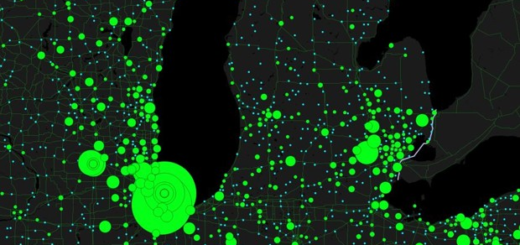San Andreas Fault – The Most Dangerous Crack In America
– San Andreas fault is an enormous crack that extends about 800 miles (1,300 km) through California.
It’s America’s most dangerous fault and the fear of a huge earthquake from the San Andreas has been a major subject for disaster films, such as Superman and, more recently, San Andreas. But how big could this potential earthquake be and how much destruction can we expect?

No-one can deny that San Andreas fault is a major threat to many people and could cripple the national economy. The crack runs through vineyards and subway stations, power lines and water mains. Millions live and work alongside the crack, many passing over it (966 roads cross the line) every day.
According to a study conducted by the United States Geological Survey, a big quake along the San Andreas could kill 1,800 people, injure 55,000 and wreak $200 million in damage. It could take years, nearly a decade, for California to recover.
In 2016, Thomas Jordan, director of the Southern California Earthquake Center announced that the San Andreas fault appears to be in a critical state and as such, could generate a large earthquake imminently.
There has not been a major release of stresses in the southern portion of the San Andreas fault system since 1857, but earthquakes can happen at any time.
San Andreas is one of many fault systems roughly marking the border between the Pacific and North American tectonic plates. Both plates are moving in an approximately northerly direction but the Pacific plate is moving faster than its North American counterpart, meaning that stresses between the plates are constantly building up.
In the film, the San Andreas fault produces an earthquake with a magnitude of 9.0. In most cases, earthquakes of this magnitude happen in countries like Chile and japan, where one tectonic plate is being forced below another. In California, two plates are sliding past each other and it’s very unlikely California can experience an earthquake with a magnitude of 9.0.
Still, an earthquake of lower magnitude would also be devastating.
Recent analyses suggest that in a worst-case scenario, an earthquake of magnitude 8.0 on the Richter scale can occur along the San Andreas fault system. Scientists estimate a 7% probability estimate that such an event could occur in Southern California in the next 30 years; over the same period, there is a 75% chance of a magnitude 7.0 event.
There will be no tsunamis and deep chasms opening up, but we can expect violent shaking, building damage, fires and widespread economic impacts as the region is out of action for potentially a long period of time.
Fortunately, people living near the fault are better prepared than they have ever been before. Still, are many things one cannot be properly prepared for, such as for example that people living in the area would be without power and water for interminable lengths of time, and in the immediate aftermath, firefighters would not have access to water to fight the fires that would spring up in the wake of the disaster.
Researchers are producing detailed 3D maps of the geology near the San Andreas fault. These maps can be used to generate detailed assessments for almost any possible earthquake scenario that might happen along the fault.



 Creators of mankind
Creators of mankind Description of “Tall white aliens”
Description of “Tall white aliens” Where they came from?
Where they came from? About hostile civilizations
About hostile civilizations The war for the Earth
The war for the Earth “Tall white aliens” about eternal life
“Tall white aliens” about eternal life Video: “Nordic aliens”
Video: “Nordic aliens” Aliens
Aliens Alien encounters
Alien encounters The aliens base
The aliens base UFO
UFO Technology UFO
Technology UFO Underground civilization
Underground civilization Ancient alien artifacts
Ancient alien artifacts Military and UFO
Military and UFO Mysteries and hypotheses
Mysteries and hypotheses Scientific facts
Scientific facts


















